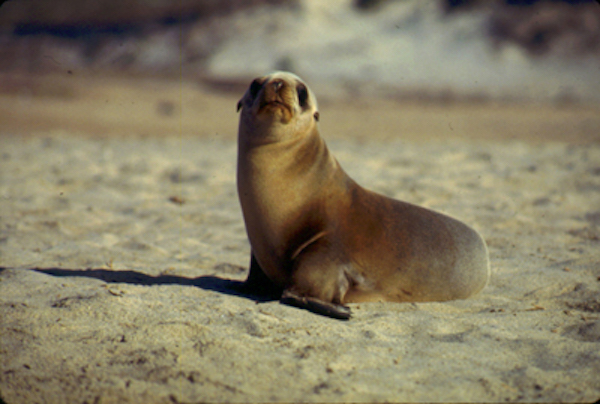Much Ado About Algae
In May 2015, scientists in the Pacific Northwest were stunned to discover a sea lion on the coast of Washington suffering from a seizure. Sea lions in California have suffered brain disorders for almost 20 years due to a toxin called domoic acid, produced by blooms of harmful algae, so it wasn’t so much the seizure that surprised the researchers. Rather, it was the location: Never before had these symptoms appeared in a sea lion so far north.

Sea lions (and other creatures) up and down the Pacific Coast are now threatened by toxic algae.
Visual: NOAA
It was only the beginning of the bad news. Last month, a team from the National Oceanic and Atmospheric Administration confirmed that the same algal toxin had not only caused the Washington sea lion’s condition, but it was present in a wide range of marine mammals — from dolphins and harbor seals to whales and seabirds — all along the Alaskan coastline, in waters previously thought to be too cold for algae to thrive.
Their study, published in the journal Harmful Algae, detected domoic acid in at least one individual from all 13 species examined; another potent toxin, saxitoxin, was found in 10 of the 13. What’s more, these toxins were geographically widespread, found from the Gulf of Alaska in the south to the Beaufort Sea, bordering the Arctic ocean.
“It’s not that we didn’t know that the cells that produce these toxins could be up there,” explained Kathi Lefebvre, the lead author on the study. “What we didn’t know is they were in high enough levels to be detected in so many marine mammals that high up on the food chain.”
Algal toxicity starts at the very bottom of the food chain, when filter-feeding plankton, fish and shellfish suck harmful algal cells from water. Because toxins are a natural byproduct within these algae, many filter feeders have co-evolved an immunity to them. But immune creatures will still carry the toxins within their bodies, and if a mammal eats hundreds of them a day, the poison can quickly build up.
These toxins also pose a threat to human health, prompting NOAA to closely monitor their levels nationwide. Normally, algae prefer warmer waters and lots of sunlight, which is limited in the ice-covered northern oceans. However, because Lefebvre’s team is the first to document algal toxins in Alaskan marine mammals, they don’t know what levels were like before sampling began in 2004.
The baselines set by this study will prove particularly relevant for further analyses, as climate change warms northern oceans and sea ice melts earlier with each passing year.
Overall, the study tells a story about Alaskan waters that has Lefebvre concerned. In 1998, she was part of the team that investigated the first spate of sea lion seizures related to domoic in California. Before 1998, these seizures were rare. Since then, they have become a normal occurrence.
“What I’m worrying about is, will it get worse for these northern latitudes, just like it did further south?” Lefebvre said. “I’m very concerned about large whales. Bowhead whales are needed for subsistence for the communities in the north. And these are long-lived, majestic animals; if there are a few years of intense blooms, they might be seriously impacted.”









